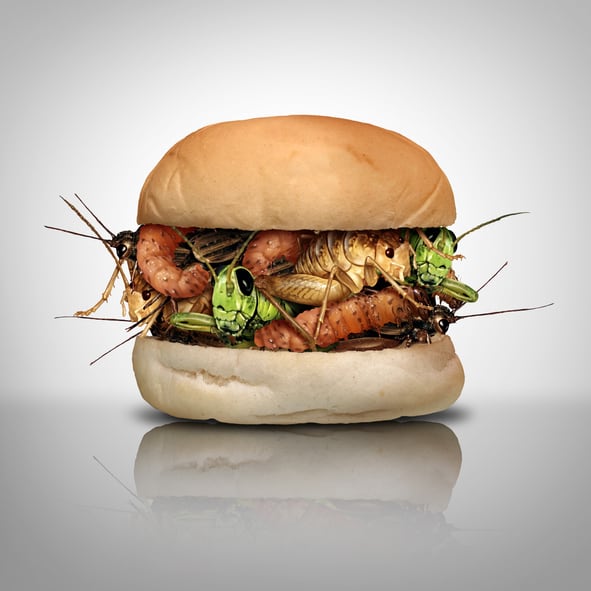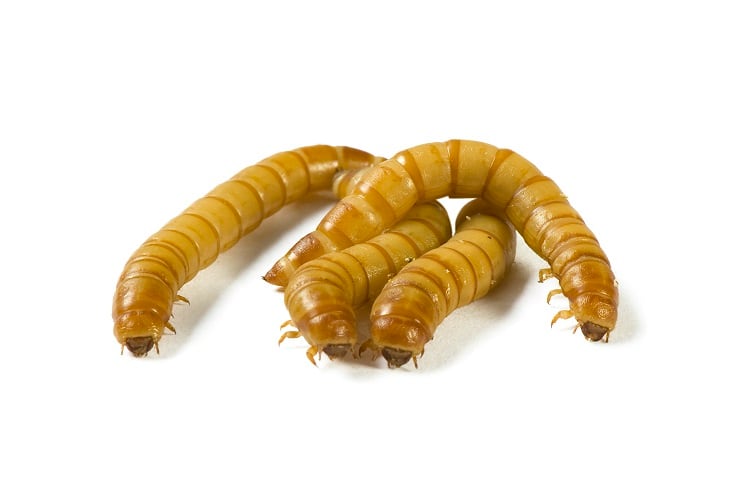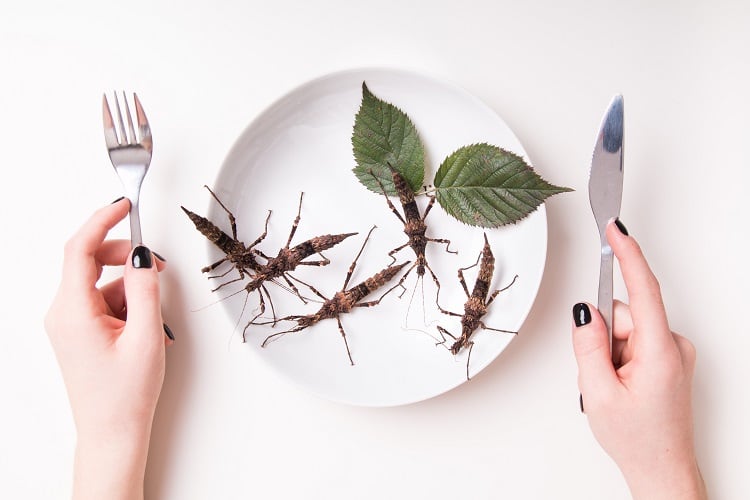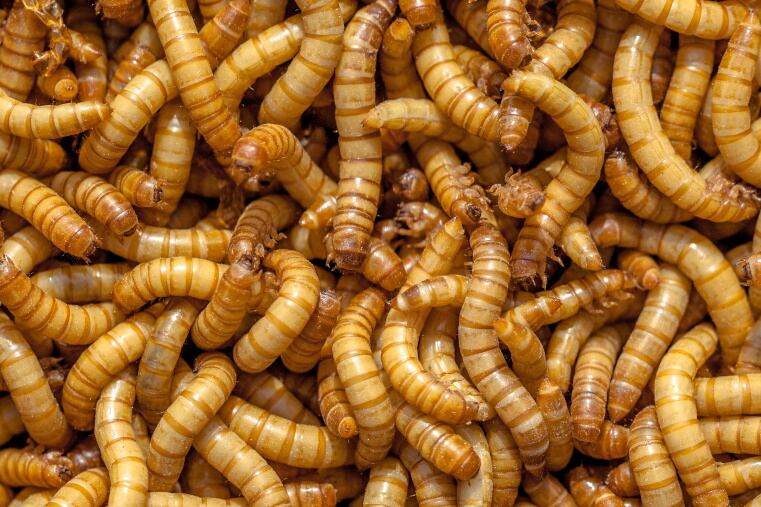It is more sustainable to use insect protein for food rather than use it to replace soybean meal in animal feed, according to the study which put the onus on the food industry to innovate to make insects as food a more palatable option for consumers.
Researchers at the University of Helsinki and LUT University in Finland explored the extent to which insect protein could help to reduce the Global Warming Potential (GWP) associated with food consumption in Europe.
Focussing on the carbon footprint implications of switching from animal-based protein for human consumption to alternative protein sources, such as insect protein, they investigated the carbon footprint associated with various methods of protein production.
These were: chickens fed with soybean; chickens fed with insects produced with industrially composite feeds; and chickens fed with insects produced with feeds from industrial side streams.
The researchers also looked at the carbon footprint from insects fed with industrially produced composite feeds and insects fed with feeds from industrial side-streams.
Chickens fed with conventional feed more sustainable in some scenarios
Insect produciton wasn't the most sustainable option in all of the production scenarios investigated. The researchers found that chickens fed with conventionally produced soybean in fact had a lesser carbon footprint than feeding chicken with insects that were fed with industrially composite feeds. But they also found that the production method with the lowest impact was insects fed with feed from industrial side streams.
This suggested that insects fed with feed from industrial side-streams – then directly consumed as food – has the greatest potential to reduce the carbon footprints of European consumers, the study concluded.
It looked at various insect species and concluded the field cricket shows the greatest range in terms of global warming potential. "The study showed there is a real benefit for humans from eating insects directly,” said Professor Bodo Steiner from the Faculty of Agriculture and Forestry, University of Helsinki. “This is superior, in terms of sustainability and carbon footprint, to using the insects as feed.”
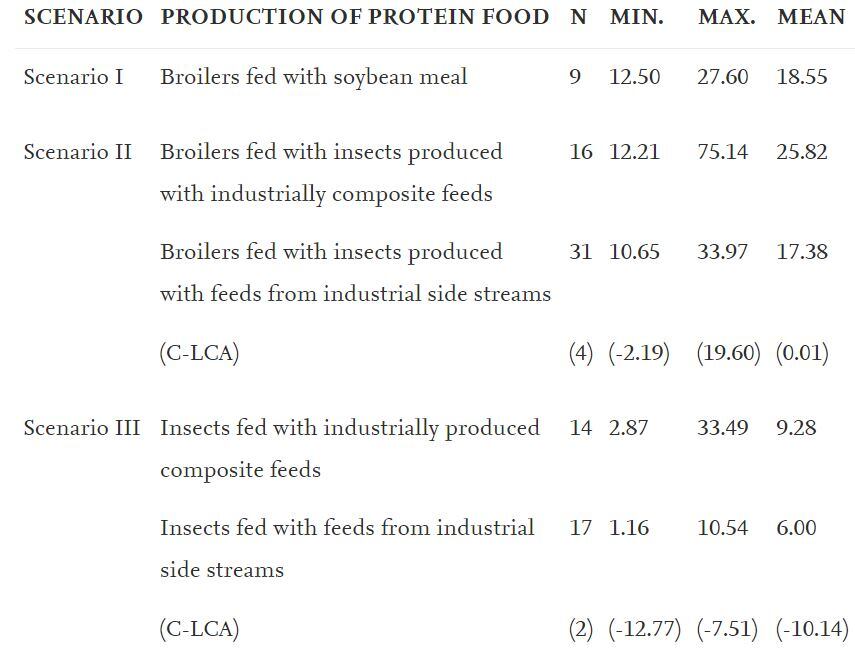
‘Unexplored potential’ of using side streams to feed insects for human consumption
The results support previous research suggesting that insect protein has the greatest potential to reduce the food-related carbon footprints of European consumers, if edible insects – such as crickets, flies, and worms – are consumed directly or processed as food. Preparation methods include eating them fresh, or drying and processing them into flour for use in bread or pasta.
Insects are also nutritionally rich in essential amino acids, and some insect species provide high good-quality fatty-acids.
But according to Steiner the results identify the “unexploited potential” of using side-streams to feed insects that then go on to be directly consumed by consumers.
"Our results indeed suggest that it is more sustainable to use insect protein for food rather than to use it to replace soybean meal in animal feed,” he said. “Yet we found that a shift to using low-value food industry side stream products – such as catering waste or by-products, for example, from fish processing – in insect production for chicken feed is key to decisively increasing the carbon footprint benefits of using insect protein over soybean meal protein."
He told FoodNavigator the question for future studies and the food industry is how to best use these side-streams. “There is unexploited potential to using side-streams to feed the insects, especially when we think of the current food waste debate,” he said, adding that current EU legislation is lagging. “We need to raise awareness that the industry wants to explore this potential, but the regulators are lagging behind in enabling the use of these side-streams.”
All this is important and timely, he said, because as a part of the current climate change debate, concerns have been raised over the increasing deforestation associated with the rapid expansion of global soybean cultivation, which is a major protein source for feeding livestock raised to be food for humans.
But can edible insects ever be palatable?
The other elephant in the room is consumer acceptance of insects.
According to Steiner, more creative solutions from the food industry are needed to make insects in food products an appetizing option for shoppers. “You see burgers with crickets, but I think we need more innovation just like you see with the different meat-free burgers.” He added: “Younger people especially are willing to experiment and there is clear production capacity in Europe.”
A separate recent report from the Woven Network, the UK’s membership organisation for businesses operating in the edible insect sector, reckons the sector could generate around £112m in revenue by 2025. That’s based on the growth that we have seen in companies in the sector over recent years, the income they have already generated and their expectations for the future. It cited other data from Meticulous Research suggesting the global edible insects (farmed and harvested) market will grow at a CAGR of 28.0% from USD 134m in 2018 to USD 458m by 2023. The global insect protein market could be worth up to USD 8bn by 2030 (+24% CAGR), Barclays Research has added.
There are over 1,800 species of edible insects globally, and many have provided valuable nutrition for centuries in many countries.
Given the much smaller footprint of insect farming in land, resource and GHG terms, the sector could have a significant place in the future Food Strategy as the Government seeks to drive to Net Zero, according to Woven.
Dr Nick Rousseau, Founder and MD of the Woven Network said: “The edible insect sector in the UK is one of the most progressive and innovative in Europe and currently has a healthy mix of farming operations and companies developing and selling a wide range of products into the UK and overseas markets.
"We are coordinating the work of preparing and submitting Novel Food dossiers to the Food Standards Agency that will clearly show that our products are safe for consumers. Indeed, our members have already generated over £6m in income from selling edible insect products with no ill effects.”
Reference
The potential of insect protein to reduce food-based carbon footprints in Europe: The case of broiler meat production
Journal of Cleaner Production
https://doi.org/10.1016/j.jclepro.2021.128799


